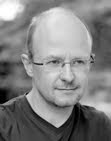
We've returned safe and well from our trip through the Karakoram. Of course, all the clichés apply: it was an "unforgettable" journey through some of the "most spectacular" landscapes on the planet.
I picked up a quote from veteran Belgian artist-traveller Henri Michaux in a recent issue of German magazine PhotoNews. He writes: "Travel doesn't bring real development; one merely becomes worldly, informed ... Basically, one can find one's truth equally well by staring 48 hours at a tapestry." I disagree. These kinds of journeys do certainly have a deeper impact. It's only difficult to figure out what that impact exactly is. One commits to doing a very particular journey, a trek from A to B, and that is the topographical script with which one enters the fray. But as the journey progresses, the initial narrative fades to the background and more unconscious, subterranean complexes of thoughts and impressions take shape. For me the most profound, immediate and unavoidable impression derived from the uncompromising harshness of nature. The Karakoram is probably unique in the world in its combination of desertlike aridity and a most severe, ice-clad mountain architecture. Think of it as a hybrid between Mars and the Antarctic. There is almost nothing that soothes the eye. Everything is angular, abrasive, inaccessible. Once in the realm of Snow Lake, the expanses widen but the desertlike ambiente remains. The 360° is capped by fierce 6000 to 7000m peaks. Only the smooth glacier expanses offer some relief from all this vertical bravado. But lower down, these ice rivers offer perhaps the most intimidating visions of mineral chaos that I have seen. I often thought about Dantes visions of hell when I witnessed in sheer disbelief how 40 ant-like creatures - ourselves and our porters - made their way through an utterly instable, haphazard and, frankly, agressively ugly mixture of ice, melting water, loose rocks and mineral debris.
These impressions are woven into many others: personal encounters, the feelings of physical and psychological strain, the sheer boredom of spending hours in a tent melting snow, the uncommonly strong impressions from reading fiction books in these realms (I read, amongst others, Pamuk's "My name is red" which I came to thoroughly dislike after a couple of hundreds of pages) ... Again, how all of this will coagulate into something enduringly meaningful remains as yet an open question. I don't know what significance this journey ultimately is going to taken on for me. Maybe I will not be able to resist encapsulating the whole affair in a comfortable, standardised myth about what an exotic mountaineering adventure it was. Hopefully I can keep my options open long enough.
The pictures I brought home will be an important element in helping me to make sense, retrospectively, of this trip. As always, they are Fremdkörper which will continue to open new vistas on this experience and will invite renewed study and interpretation. I brought back a total of 360 negatives on a 6x9 format and around 200 B&W positives (very modest compared to what digital shooters bring back).
Looking at my contact prints which I got just from the lab, there is the inevitable feeling of disappointment. How to capture the sublimity and raw power of these surroundings on what remains a fairly small negative? I found the Fuji GW690III fit for the job. It's robust and no frills. But it's not a camera where I have a particular chemistry with. I don't like the polycarbonate, the clunkiness, the plebeic "zing" when you trip the shutter. The viewfinder is ok but it doesn't pull you in your subject as a Leica or a Hexar RF (or a top SLR) is able to do. I felt myself often longing for the groundglass of a 4x5" camera. The majesty and tectonic complexity of these surroundings simply demand a large negative. The Contax Aria I took in addition to the Fuji left me wholly uninspired and could have been left better at home.
I will need some time to patiently sift through the contacts, scan, print and build an idea of what is really there. I have some ideas to structure the portfolio (from reading Derrida's "Foi et Savoir" on the road) but I need to see whether the material will lend itself to it.
The first image I scanned is not a mountain vista but a portrait of water melons in the Skardu bazaar.




